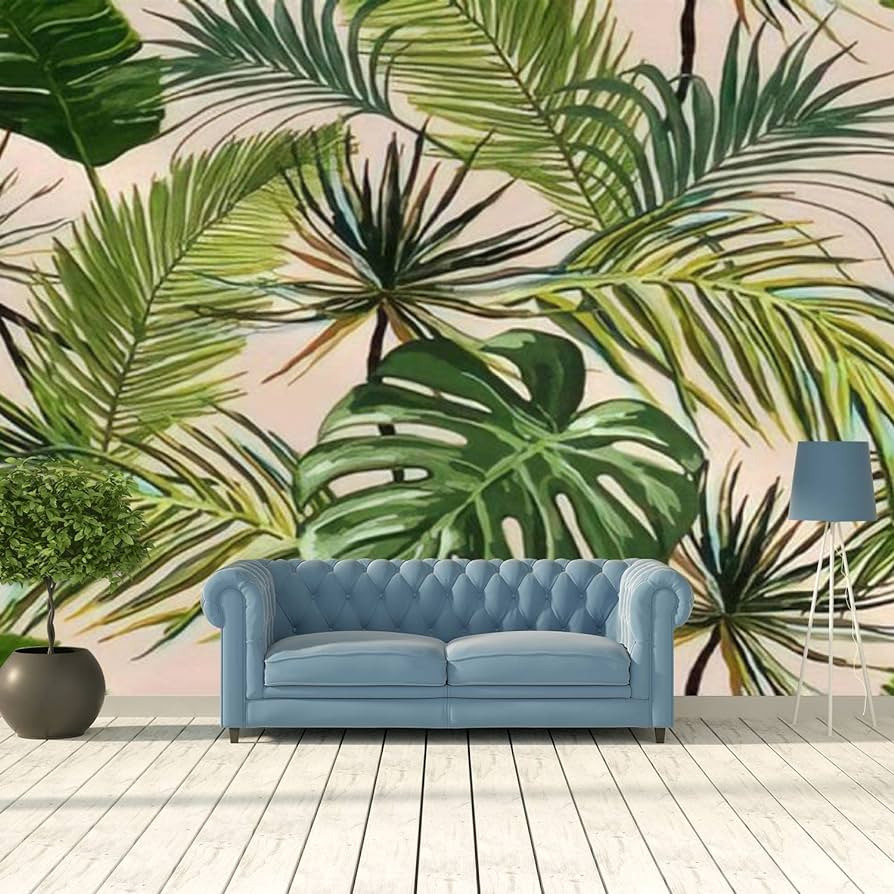Mural Installation: Tips and Tricks for Perfect Results
You’ve admired the stunning murals that grace the walls of your favorite coffee shop or the vibrant artwork that transforms a dull alleyway into a captivating outdoor gallery. Now, you’re ready to bring that same artistic flair into your own space. But where do you even begin?
Fear not, for we have the tips and tricks that will guide you through the process of mural installation, ensuring perfect results that will leave everyone in awe. From choosing the right location to the finishing touches, we’ve got you covered.
So, let’s dive right in and discover the secrets behind creating a captivating mural that will transform your space into a work of art.
Choosing the Right Location
Where should you choose to install your mural?
When it comes to installing a mural, the location you choose plays a crucial role in its overall impact and longevity. Consider the size and style of your mural, as well as the purpose and theme behind it.
If you’re looking to make a bold statement, an exterior wall facing a busy street or a prominent indoor wall can be ideal. This way, your mural will catch the attention of passersby and leave a lasting impression.
However, if you want your mural to create a more intimate and personal atmosphere, consider installing it in a more secluded area, such as a backyard or a smaller room.
Additionally, take into account the lighting conditions of the chosen location. Adequate lighting can enhance the colors and details of your mural, making it more visually striking. Avoid areas that are prone to excessive moisture or direct sunlight, as these can cause damage to the mural over time.
Lastly, always seek permission from property owners or authorities before installing your mural, ensuring that it complies with any regulations or guidelines in place.
Preparing the Surface
To ensure a smooth and long-lasting mural installation, it’s important to properly prepare the surface. This step is crucial in achieving the desired results and ensuring the longevity of your artwork.
Start by thoroughly cleaning the surface to remove any dirt, dust, or debris. Use a mild detergent or a mixture of water and vinegar to gently scrub the area. Rinse it thoroughly and allow it to dry completely before proceeding.
Next, inspect the surface for any cracks, holes, or imperfections. Fill in these areas using a suitable filler or patching compound. Smooth out the surface with sandpaper or a putty knife to create an even and seamless base.
Once the surface is clean and repaired, it’s time to prime it. Applying a primer will help the paint adhere better and provide a more even finish. Choose a primer that’s compatible with the surface material and apply it according to the manufacturer’s instructions. Allow the primer to dry completely before moving on to the next step.
In addition to priming, consider applying a base coat of paint that matches the background color of your mural. This will help create a uniform appearance and enhance the vibrancy of the final artwork.
Creating a Design Plan
Now it’s time to start sketching your initial ideas for the mural. Think about the main elements you want to include and how they’ll fit together on the wall.
Next, choose a color palette that complements the space and evokes the desired mood.
Sketching Initial Ideas
Start by sketching your initial ideas to create a design plan for your mural installation. Sketching allows you to visualize your vision and experiment with different concepts before committing to a final design.
Begin by gathering inspiration from various sources such as photographs, artwork, and nature. Next, grab a pencil and paper and start sketching rough outlines of your ideas. Don’t worry about perfection at this stage; focus on capturing the essence of your concept.
Experiment with different compositions, color schemes, and details. As you sketch, consider the size and scale of your mural and how it will interact with its surroundings.
This process will help you refine your ideas and ensure that your final design meets your goals and objectives for the mural installation.
Choosing Color Palette
As you continue to develop your design plan for your mural installation, one crucial aspect to consider is selecting a color palette that will bring your vision to life. The color palette you choose will set the mood and evoke certain emotions in the viewers.
It’s important to think about the overall theme and message of your mural and select colors that align with it. Consider using a combination of warm and cool tones to create contrast and balance. Experiment with different shades and hues to add depth and dimension to your mural.
Additionally, think about the location of your mural and how the surrounding environment will interact with the colors you choose.
Mapping Out Mural Placement
Consider the layout and dimensions of your chosen space as you begin to map out the placement of your mural. Take a step back and analyze the area to determine the best location for your artwork. Look for a wall that has enough space to accommodate your design without feeling cramped.
Consider the height and width of the wall, as well as any architectural features that may impact the placement of your mural. Keep in mind the overall aesthetic of the space and how your mural will fit into the existing surroundings.
It’s also important to consider the viewing angles and sightlines, ensuring that your mural will be visible and impactful from different perspectives. By carefully mapping out the placement of your mural, you can create a design plan that maximizes its visual impact.
Selecting the Right Materials
To ensure the success of your mural installation, carefully select the appropriate materials. Choosing the right materials won’t only enhance the overall aesthetic of your mural but also ensure its longevity.
When it comes to selecting paints, opt for high-quality acrylic or latex paints that are specifically formulated for outdoor use. These paints are resistant to fading, cracking, and peeling, ensuring that your mural stays vibrant and intact for years to come. Additionally, consider using primers and sealers that are compatible with your chosen paints. Primers help create a smooth surface for the paint to adhere to, while sealers provide an extra layer of protection against harsh weather conditions and UV rays.
When it comes to brushes and rollers, invest in high-quality tools that are suitable for the size and texture of your mural. This will ensure smooth and even application of paint, resulting in professional-looking results.
Lastly, don’t forget to consider the surface you’ll be working on. Different materials, such as wood, concrete, or brick, may require specific preparation and priming techniques.
Techniques for Smooth Application
For a smooth application of your mural, ensure you have the right tools and techniques in place.
To begin, make sure you have a good quality paint roller with a smooth and even surface. This will help you achieve a seamless finish on your mural.
Additionally, use a sturdy ladder or scaffolding to reach high areas without straining yourself.
It’s crucial to have a clean and well-prepared surface before applying the mural. Remove any dirt, dust, or debris from the wall, and consider applying a primer to ensure better adhesion of the paint.
When applying the paint, use consistent and even strokes to avoid any streaks or uneven patches. If you’re using multiple colors, blend them carefully to create a cohesive and professional look.
Don’t forget to take breaks and step back periodically to examine your work from a distance. This will help you identify any imperfections and make necessary adjustments.
Finishing Touches and Maintenance Tips
Now that you have achieved a smooth application of your mural, let’s move on to the crucial finishing touches and maintenance tips to ensure your masterpiece remains pristine.
First and foremost, take a step back and evaluate your artwork. Look for any imperfections or areas that may need touch-ups. Use a small brush and matching paint to carefully fix any blemishes or smudges. This attention to detail will make a world of difference in the final result.
Once you’re satisfied with the overall appearance, consider adding a protective sealant to your mural. This will help protect it from dust, dirt, and UV rays. Choose a sealant specifically designed for outdoor use, if applicable, or opt for a clear varnish if your mural is indoors. Apply the sealant evenly and allow it to dry completely before exposing your mural to any elements.
Regular maintenance is crucial to keeping your mural looking its best. Dust it regularly using a soft brush or cloth to prevent the buildup of dirt. Avoid using abrasive cleaners or harsh chemicals, as they can damage the paint. Instead, gently wipe the surface with a damp cloth if necessary.
Frequently Asked Questions
How Long Does It Typically Take to Install a Mural?
Typically, it doesn’t take too long to install a mural. The time it takes depends on various factors like the size and complexity of the mural, the surface it’s being installed on, and the experience of the installer.
However, on average, mural installations can take anywhere from a few hours to a couple of days. It’s important to plan ahead and allocate enough time for the installation process to ensure perfect results.
Can I Install a Mural on Any Type of Surface?
You can generally install a mural on any type of surface, but the success of the installation will depend on the condition of the surface and the type of mural you’re using.
Some surfaces, like smooth walls, are easier to work with and may require less preparation. However, if you’re working with a rough or textured surface, you may need to do some additional prep work to ensure the mural adheres properly.
It’s always a good idea to consult with a professional for guidance on your specific surface.
What Are Some Common Mistakes to Avoid When Installing a Mural?
When installing a mural, there are some common mistakes to avoid.
One isn’t properly preparing the surface before applying the mural, which can lead to peeling or bubbling later on.
Another mistake is rushing the installation process and not taking the time to ensure proper alignment and smooth application.
Additionally, failing to use the right adhesive or tools for the specific surface can result in a poor outcome.
How Do I Ensure That the Mural Will Last for a Long Time Without Fading or Peeling?
To ensure your mural lasts without fading or peeling, take some precautions.
– First, make sure the surface is clean and smooth before installation.
– Use high-quality, fade-resistant paint or vinyl materials.
– Apply a primer to enhance adhesion.
– Protect your mural from direct sunlight and harsh weather conditions with a clear protective coating.
– Regularly clean and maintain your mural by gently wiping it with a soft cloth.
These steps will help preserve the longevity and beauty of your mural.
Are There Any Special Considerations or Precautions to Take When Installing a Mural Outdoors?
When installing a mural outdoors, there are some special considerations and precautions to take.
Firstly, make sure to choose a durable and weather-resistant material for the mural.
Additionally, ensure that the surface you’re installing the mural on is clean and smooth.
It’s also important to properly seal the mural to protect it from UV rays and moisture.
Conclusion
So there you have it, some tips and tricks for achieving perfect results with your mural installation.
By choosing the right location, preparing the surface properly, creating a design plan, selecting the right materials, applying techniques for smooth application, and adding finishing touches, you can create a stunning mural that will enhance any space.
Don’t forget to follow the maintenance tips to ensure your mural stays beautiful for years to come.</p anchor >
Happy mural making!

Welcome to my website! My name is Tyson Watson, and I am a passionate and experienced Restaurant Interior Designer. With a keen eye for detail and a deep understanding of the power of aesthetics, I specialize in creating captivating and functional spaces that leave a lasting impression on both clients and customers.

